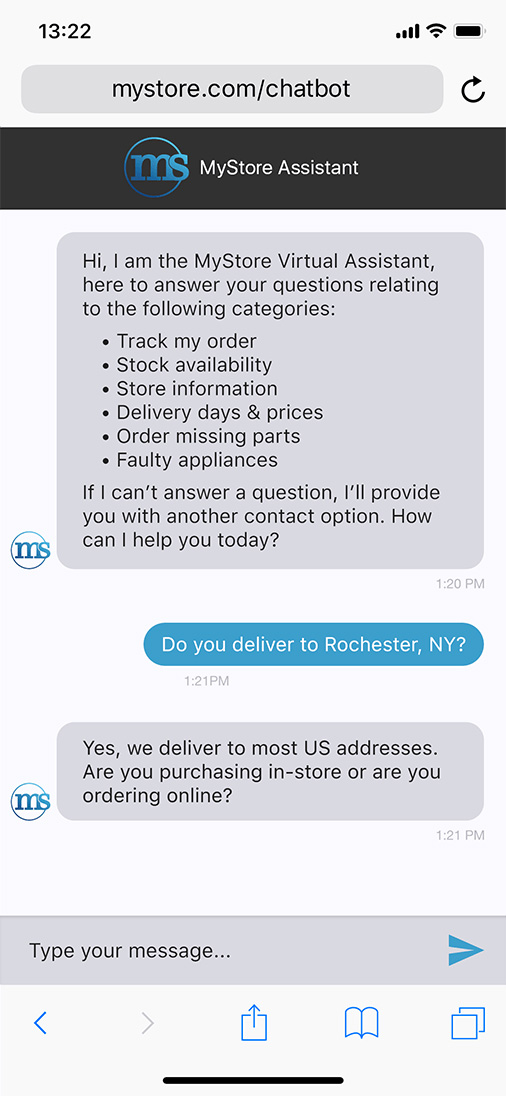Five ways to cut ecommerce cart abandonment.
Cart abandonment is one of the biggest causes of poor ecommerce conversion. Discover some of the biggest challenges and how to solve them quickly.

With most retailers’ flagship stores now online, nailing a seamless customer journey — from first browse to payment conversion — is critical. With each customer not just representing a potential sale but also recurring business and loyalty, brands simply can’t afford to get it wrong.
Customers abandon nearly 70% of online shopping carts before completing a transaction, leading to significant revenue loss for retailers, a bonus for their competitors, and frustration for the end customer.
While some abandoned carts are inevitably out of retailers’ control, the vast majority result from confusing customer journeys and surprises during the checkout process.
The good news, however, is that most of these issues are fixable—some, even straight off the bat. In this blog, we’ll look at the biggest transaction roadblocks customers face and five steps you can take to resolve them.
A seamless customer journey is key, so why would shoppers settle for anything less?
Picture this: you’re browsing Google for a new kitchen appliance and find the one you want at a reputable retailer. You land on the site and add the item to your basket. But there’s just one problem; as you enter your details, the retailer wants you to sign up for an account, sign up for its newsletter, and to top it all off, they’ve surprised you with a massive shipping fee.
Your response? Close the tab and continue looking for another brand. It’s an all-too-common scenario caused by a wide range of problems in the checkout process. Here are some of the most common:
High additional costs: Besides fiercely brand-loyal customers, most decisions center around cost. So, when you land a shopper with unexpected shipping and taxes at the last minute, it’s a sure-fire way to make them drop the transaction.
Account creation: Again, unless they’re fiercely loyal, the idea of creating another account with yet another brand will often be out of the question for most customers. It’s an additional—and frankly unnecessary—checkout step that will likely result in an abandoned cart.
Broken or complicated checkout process: When you consider each checkout step—such as adding addresses or unnecessary information for marketing purposes—is more likely to lead to cart abandonment, less is definitely more.
Security concerns: With stories regularly hitting the news about hackers compromising customer data held by brands, many shoppers are hesitant to save their payment information—prompting many to ditch a transaction that doesn’t offer payment flexibility.
Website and app performance issues: Most customers are time-poor, meaning unnecessary time wasted shopping is time that could otherwise be much better spent. A slow interface or an app prone to freezing will instantly turn customers away.
Five tried and tested ways to reduce cart abandonment
While some of these challenges may ring true, the good news is they’re easily solved with the right strategy. Here are five changes you can make to your checkout process to boost conversions.
1. Use the right technology
Slow, outdated technology unfit for modern ecommerce is often the first and most common stumbling block for abandoned carts. That’s why leveraging the right software that integrates with a business’s existing tech stack can pay dividends in the long run.
Measuring load times, downtime, and responsiveness can help you identify points of weakness. And anticipating peak times, such as holidays, can help avoid embarrassing dropouts.
Continuously testing and analyzing your checkout process using A/B testing is also crucial. As is making sure you can tweak any function or design feature in the future. Understanding how your customers use your checkout process is key to unlocking competitive advantages and making it more likely for purchases to complete.
2. Use proactive alerts and reminders
Keeping customers informed throughout the purchase journey can make all the difference in helping foster trust in your brand.

Proactive reminders using interactive push or in-app notifications can also significantly reduce cart abandonment. For example, a customer may have abandoned their cart simply because they got distracted and forgot to check out.
A timely phone notification can help save a sale that would have otherwise been unnecessarily lost. In fact, customers are three times more likely to complete an abandoned purchase thanks to remarketing.
3. Enable guest users and single sign-on
Forcing customers to create an account will never work in your favor. Most customers are wise to brands’ remarketing tricks and realize their data’s value.
Offering a guest checkout option is a simple way to ensure your customers convert without forcing them to commit to anything. You can even give them the option to create an account on the confirmation page to receive updates and special offers.
Single sign-on—using an existing Google or social media account—is an increasingly common way to shop online. It allows customers to have all their details and payment information auto-populated at just the click of a button, accelerating the checkout process.
4. Provide easy-to-access support
From fetching additional product information to searching for FAQs, fast access to comprehensive customer support can make all the difference in a purchase decision. That’s why it’s important to offer wide-ranging support options, such as live recommendations and chat functionality, allowing customers to reach out to you on the channels they prefer whenever they want.

A great way to offer anytime communication is through automation. By using AI-powered chatbots and self-service, you can remove the manual labor from status, returns, and refund inquiries, allowing customers to track, modify, and query their orders.
An automated chatbot can even hand over more complex inquiries to your human agents if necessary, ensuring no customer query goes unanswered.
5. Offer advanced payment options
While a debit or credit card is still the most common payment option, customers increasingly demand more flexible payment options like they’re used to in a physical store.
Offering multiple payment options will help reduce the risk of cart abandonment. For example, digital methods such as Apple Pay and Google Wallet can help alleviate customer security concerns, ensuring no credit card information passes hands.
Mobile wallets also have the added advantage of storing coupons and loyalty cards, and location-based services, helping foster brand loyalty and making marketing more relevant.
For more expensive items, retailers are also increasingly offering third-party payment plans through vendors like Klarna.
To discover ecommerce technology designed to get results, explore our retail solutions today.


